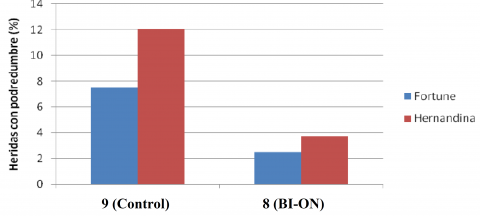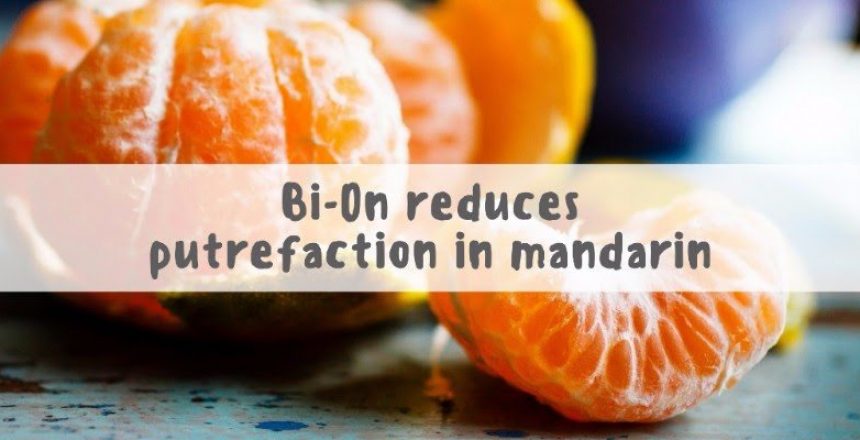Citrus fruits are susceptible to various diseases related to air quality that reduce their postharvest life. As they are not climacteric fruits, exposure to ethylene does not stimulate ripening, but instead speeds up the senescence of the fruit. Senescence causes a series of changes and deterioration that contribute to the weakening of the skin structure. It has also been demonstrated that some volatile organic compounds (VOCs) (e.g. limonene, acetaldehyde, ethanol) given off by the senescent fruit act as chemical signals for the invasion of pathogens.
Filtering the air with BiOn delays the aging and deterioration of citrus fruit caused by poor air quality. It acts in three ways: by eliminating ethylene, VOCs and the retention of fungal spores.
The effectiveness of Bi-On in extending the postharvest life of citrus fruits has been demonstrated in different independent trials and field tests. Below, we describe a trial carried out under real conditions in a commercial chamber in the province of Tarragona (Spain), under the direction of the IRTA research institute.
The objective of this trial was to demonstrate the effectiveness of cleaning the air using Bi-On in controlling the putrefaction caused by environmental pollution. Unwaxed Fortune and Hernandina mandarin oranges disinfected superficially and with forced injuries to facilitate infection were kept for two weeks in two different commercial chambers, one with and one without the BiOn ETH fill media equipment. Subsequently, the fruit was incubated in aseptic conditions at 20ºC for 5 days and the percentage of injuries that had developed putrefaction was counted.
As can be seen in Figure 1, the fruit kept for two weeks in the chamber with the ETH equipment showed a substantially lower level of putrefaction than that kept in the chamber with no equipment, both in the Fortune and the Hernandina varieties.
The results show that Bi-On reduced the incidence of putrefaction in mandarin oranges caused by environmental pollution within the chamber by 68%.
See this origional article on the official Bioconservacion website here.

Figure 1. Incidence of injuries with putrefaction in Fortune and Hernandina mandarin oranges that, after they were disinfected superficially and injured, were kept for two weeks in chambers with and without Bi-On. The reading was taken after 7 days at 20ºC in aseptic conditions.
